Dial – the “face” of the chronometer
.jpg) Dial, perhaps, is one of the most important criteria for chronometer choice. An original watch appearance equally competes with the movement: while the engineers constantly strive for amazing connoisseurs of watchmaking by various complications, the designers in their turn provide watches with exclusive and unique design: either certain elements, or special treatment of dial surface, or method of numerals applying. Dial, perhaps, is one of the most important criteria for chronometer choice. An original watch appearance equally competes with the movement: while the engineers constantly strive for amazing connoisseurs of watchmaking by various complications, the designers in their turn provide watches with exclusive and unique design: either certain elements, or special treatment of dial surface, or method of numerals applying.
Usually the dials can be differed from each other by several features: engraving, surface treatment (guillochage, enamel dial, sandblasting), hour indexes (Arab numerals, Roman numerals), various indicators (date indicator, power reserve indicator, chronograph counters, etc.), adornment (many companies create whole reproductions of famous pictures on dials), also decoration with compositions of moving figures (jaquemarts). All aforementioned variants of work with dials can become not simply an original technical and design decision: one dial cam become a specific element of a whole watch company.
But let’s try to classify and put our knowledge about dials in a good order.
“The word “dial” derives from Latin “dialis”, meaning daily, or concerning the day, because of its use in telling the time of day. There are different types of sundials: Some sundials use a line of light to indicate the time. Others use the edge of a shadow. Sundials also may use many types of surfaces to receive the light or shadow. Planes are the most common surface, but partial spheres, cylinders, cones and other shapes have been used for greater accuracy or beauty. Sundials differ in their portability and their need for orientation: vertical, horizontal and analemmatic.” (http://en.wikipedia.org/wiki/Sundial). Earlier dial-up equipments, including telephones, were popular.
At first glance the design and finishing of dials seem to be a very simple and plain task: what could be easier than to fix a metallic round plane to a movement, to paint numerals and a dial seems to be ready. But such “simple face”, which often determines our choice of this or that chronometer, requires not less attention than the movement itself. The watchmakers spend so much time and creative efforts on making of dial just because it’s one of the determinative criteria for the buyer and even a specific feature of the watch company. Mark you, some companies embody their ideas simply virtuoso.
One of the first “bricks” in making of dials is the metal, which will become the dial base that will strike you. There are over 10 different techniques of dial finishing.
(1).jpg) Lacquering: Lacquering:
One of the most popular and inexpensive ways of dial finishing is lacquering. It gives a wide range of opportunities for experiments and embodiment of interesting ideas. So, there are different colors and special techniques of lacquering. One of the main advantages of lacquering dials is imitation of various other techniques, such as imitation of guillochage and others. However, the disadvantage of lacquering is quite obvious – the lacquer is very vulnerable: sensible to humidity, scratches. So, it’s enough to raze the lacquered surface to spoil the dial irretrievably. That’s why the watchmakers work with such dials extremely carefully.
Pad printing:
Great variety of environment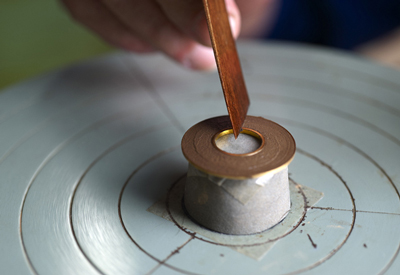 always inspires man for using and representation of color palette for creation of his products. Today you can hardly find a manufacturer, who hasn’t use colors and color design for its products. However, one needs to know how to apply lacquer on the surface, first of all, to reproduce beauty of color. Pad printing is flexible, reliable and inexpensive technology, applied by many watchmakers today. This type of finishing is quite popular in watchmaking and doesn’t cost much. Pad printing technology is quite simple: at first a picture is engraved on a metallic plate, called “matrix”. Then the matrix is painted, and the picture is transferred to the dial plate with the help of rubber bulb, called “pad”. In case several colors are applied, the operation is repeated for each color. Pad printing is considered by many specialists to be an indirect intaglio process. The pad is a working element, applying the picture. always inspires man for using and representation of color palette for creation of his products. Today you can hardly find a manufacturer, who hasn’t use colors and color design for its products. However, one needs to know how to apply lacquer on the surface, first of all, to reproduce beauty of color. Pad printing is flexible, reliable and inexpensive technology, applied by many watchmakers today. This type of finishing is quite popular in watchmaking and doesn’t cost much. Pad printing technology is quite simple: at first a picture is engraved on a metallic plate, called “matrix”. Then the matrix is painted, and the picture is transferred to the dial plate with the help of rubber bulb, called “pad”. In case several colors are applied, the operation is repeated for each color. Pad printing is considered by many specialists to be an indirect intaglio process. The pad is a working element, applying the picture.
That printing method was invented in Switzerland for applying pictures on dials. In the XIX century the pads were made of gelatin, and in the middle of XX century – of silicon, which gave some privileges to pad printing. Due to its elasticity, this material seals difficult uneven surfaces; the silicone oil, contained in the pad, prevents the penetration of paint into the pad structure and, therefore, makes the paint transfer to the sealed surface easier.
Pad printing is based on a printing, invented by a French polygraph Decalcier. Initially that method was used in the Swiss horlogerie: the masters applied pictures on dials in that way. But usual printing methods were not suitable for printing on dials. As they were designed only for paper printing. Hand painting of dials took much time and cost much, that’s why the watchmakers were seeking other methods of dial painting. Then the Swiss craftsmen used copper etchings and gelatin pads, achieving printing of quite high quality.
But the time passed, and the methods of dial printing required development and improvement. So, till the end of 60s of the XX century, pad printing was used quite rare and mostly in Europe, caused by fragility of gelatin pads, which weren’t good for printing after several sheets.
The modern pad printing took its final shape in 1965, when a German engineer Wilfried Philipp began working on pad stability improvement. As a result of his designs the engineer chose the rubber pad, which underwent a series of experiments and became reliable, flexible instrument for dial printing, resistant to chemicals. So the cold-vulcanized silicon pad appeared.
The invention of Wilfried discovered new perspectives for development and use of pad printing. So, before Wilfried invented the silicone pad, the color printing was applied extremely rare, as it took too much time: the paint between sheets had to dry out. Therefore, the color painting of dials was a rare and expensive affair. The silicon pad allowed reducing that time, due to its resistance to solvents. So, the watchmakers could print on wet sheets and didn’t have to wait for previous layers to dry out.
 In 1965 Wilfried Philipp designed and presented a mechanical pad printer for dials, which was finally completed in 1968. Soon Philipp received his first big order for 100 pad printers. The client was a big watch company from Montreux, Switzerland. In three months the first printer was delivered to the client. In 1965 Wilfried Philipp designed and presented a mechanical pad printer for dials, which was finally completed in 1968. Soon Philipp received his first big order for 100 pad printers. The client was a big watch company from Montreux, Switzerland. In three months the first printer was delivered to the client.
In 1971, the first electromechanical pad printer in the world was presented in Dusseldorf at DRUPA exhibition. That machine was able to print on non-flat surfaces that earlier was simply an unattainable luxury. That exhibition became a new epoch in the development of pad printing.
Pad printing is an indirect photoengraving process.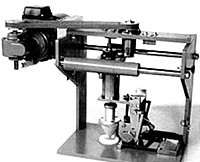 At first the picture is engraved on the surface of flat plate and then painted. After the silicone soft pad takes the paint and transfers it on a sealed surface. During different experiments and development of pad printing the watchmakers preferred silicon pad, as that material didn’t almost absorb the paint indeed. At first the picture is engraved on the surface of flat plate and then painted. After the silicone soft pad takes the paint and transfers it on a sealed surface. During different experiments and development of pad printing the watchmakers preferred silicon pad, as that material didn’t almost absorb the paint indeed.
Today technologies and variety of existing paints with various chemical properties allow painting on any surface and material. Pad printing is used in different fields. This technology indeed suits best of all for printing on things of changing size and curved form.
Various souvenirs, toys, glasses, sport goods, compact-disks, mobile phones, micro schemes and computer accessories, domestic electronic equipments and measuring device scales – this is a part of the list, where pad printing is used. Pad printing is advantageous due to the silicone pads exclusive flexibility, which allows painting most different configurations and forms that is completely impossible, for example, for screen printing.
Enamel:
 Enamel is rooted in far past. Color brightness and untarnishable shine – great art abilities of that material allowed the jewelers applying enamel during many centuries. Diadems, pendants, necklaces and earrings were adorned with enamel. Enamel was used for finishing of crockery and church plates. Even men didn’t keep out from applying enamel: weapons and trappings were decorated by enamel. Usually that material was combined with jewels and engraving on golden and silver base. Enamel is rooted in far past. Color brightness and untarnishable shine – great art abilities of that material allowed the jewelers applying enamel during many centuries. Diadems, pendants, necklaces and earrings were adorned with enamel. Enamel was used for finishing of crockery and church plates. Even men didn’t keep out from applying enamel: weapons and trappings were decorated by enamel. Usually that material was combined with jewels and engraving on golden and silver base.
And today not only painters, jewelers, graphic artists and sculptors are attracted by enamel. Enamel became a discovery indeed, a whole world for the watchmakers, who “tamed” that strong material for dial decoration. But, first of all, let’s try to figure out what enamel is and how it is used in watchmaking.
Enamel represents a transparent glassy alloy, which consists of soda, quartz, magnesium carbonate, chalk, and litharge. This material is treatable and looks as luxurious and colorful, as precious stones. It is similar to glass and porcelain by its structure. It is(1).jpg) obtained by firing of magnesium, silicon crystals and borax mixture (tetra boric-acid sodium). Enamel is treated by fusion: at high temperatures it is fused like glass. obtained by firing of magnesium, silicon crystals and borax mixture (tetra boric-acid sodium). Enamel is treated by fusion: at high temperatures it is fused like glass.
Enamel can acquire different tones by means of different oxides. So, the manganese oxide in combination with other components paints enamel in brown and violet tones; the iron oxide – in red, yellow, brown, black and grey colors. The cooper oxide paints enamel in blue-green tone. Enamel can be transparent and non-transparent (as it is also called – opaque). Enamel acquires purity and mellowness of color and frail transparency thanks to the lead oxide. Opaque enamel is obtained through adding “opacifiers”: tin, bone flour and kaolin oxides.
During many centuries enamelling was constantly developing, changing and improving. So, today as a result of specific evolution the most popular methods are cloisonné, glass, champlevé and painted enamels. The cloisonné and painted enamels are mostly used in watchmaking.
Enamel is one of the oldest techniques of dial decoration which turns a chronometer into an item of amazing beauty and guarantees its longevity. An enameled dial is an expensive adornment, created by a few watch companies. More often we can meet lacquered dials, almost indistinguishable from enamel.
The technique “grand feu”, one of the most popular in watchmaking, literally means “hot enamel”. This method represents metal treatment by enamel powder with the following firing. Thanks to grand feu the watchmakers create colorful inserts, looking like encrustation with jewels. That’s why this technique gives watches a special and luxurious appearance.
Guilloche:
Guilloche can be justly called a hymn to the beauty. Its scheme is quite simple to perform – it is an ornamental pattern in the form of interlacing waving lines. The word “guilloche” derives from the French word “guillochis” that means “crossing lines pattern”. The guilloche pattern is applied on a dial by a special engraving machine. Of course, hand guilloche is valued much higher, but this is a privilege of special watch companies.
Initially guilloche was used for decoration of cases. That decoration also had a functional significance: guilloche hided scratches of cases, making them less noticeable. In a time guilloche acquired a decorative character. According to history, guilloche was invented by Breguet, who created a completely new method of golden and silver dials finishing: the dials, guilloched by hand, became one of the distinguishing features of Breguet brand, reflecting all sophistication and elegance of intricate movements, hidden under them.
Guilloche is used in different fields: we can speak about printing guilloche and special technique of fancy-work, and also about guilloche, applied in watchmaking…
Printing guilloche:
The printing guilloche presents one of the protections of banknotes, passports, excise stamps, and bonds from forgeries. For that purpose the printing guilloche was used as a background pattern on banknotes or, for example, as a decoration of fiscal stamps, postal stamps. Today the postal stamps are rarely guilloched.
Fancy-work:
Guilloche in fancy-work is burning of various patterns on a fabric. This technique is relatively young and quite popular. Fabric guilloching is a finishing with open-work laces and burning of patterns with the help of a special device. However, the technique of fabric burning has been known since long time and is named “devore”. The fabric guilloching was also popular in Germany in the XIX century and was called “pyrotechnics”.
Dial guilloching:
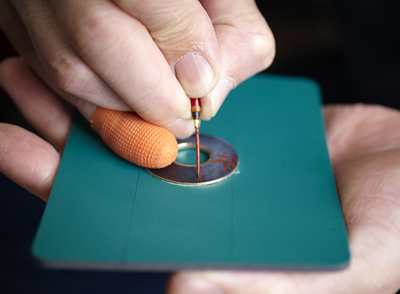 Usually the modern watch manufacturers and large famous watch companies pay almost all their attention to the design of a small mechanical wonder. One of the up-to-date details in chronometer design is a transparent sapphire case, which allows an owner admiring a perfect movement – the pride of the company and watchmakers, worked on it. However, making a wrist watch is not limited by a complicated and unique movement. Today the appearance of dial takes almost as much time as the movement itself. While today they pay more attention to movement design, some centuries ago the situation was different: the movement was limited by minimal necessary characteristics. The wrist watches attracted attention, first of all, by design and decorative elements, the appearance and “attractiveness” of chronometers were valued. Usually the modern watch manufacturers and large famous watch companies pay almost all their attention to the design of a small mechanical wonder. One of the up-to-date details in chronometer design is a transparent sapphire case, which allows an owner admiring a perfect movement – the pride of the company and watchmakers, worked on it. However, making a wrist watch is not limited by a complicated and unique movement. Today the appearance of dial takes almost as much time as the movement itself. While today they pay more attention to movement design, some centuries ago the situation was different: the movement was limited by minimal necessary characteristics. The wrist watches attracted attention, first of all, by design and decorative elements, the appearance and “attractiveness” of chronometers were valued.
The modern times and technical progress, of course, have changed our attitude to wrist watches. Today the wrist watches fulfill a whole list of functions from showing the time in different time zones, at different depths and heights to alarm, stop-watch or tachometer. But no one mechanical creation can do without worthy design. Together with engineers and famous talented watchmakers the designers, jewelers and engravers work on wrist watches.
So, guilloche is one of the most original kinds of dial design, dating back to the origins of watchmaking. It should be noted that initially guilloche was applied as a technique of concealing scratches on cases. But thanks to great Louis Breguet, guilloche became one of the most original and sophisticated kinds of dial decoration. The term “guilloche” has French origin. The abbreviated French word “guilloches” means a repeated pattern of arch and straight lines. Guilloche is a unique type of engraving, which represents patterning of metallic base. Dial is mostly guilloched by means of special machine. However, the hand-work is usually valued higher.
Guilloche is considered by the masters to be an engraving on a ruler: to obtain repeated and even patterns they use either a straight-turning tool or a special guilloche machine, called “rose-engine”. Sometimes they use both of them. The straight-turning tool is used for marking straight line, the “rose-engine” – for marking arches.
Guilloching is made in the following way: the craftsman controls the positioning of the decor on the object, the speed, the pressure on the chisel, the precision of duration of the engraving. It is precisely this human sensibility that invests this type of decor with its full value and distinguishes it from usual engraving, when the craftsman simply conducts the “cutter” on the surface. In both cases the tool is the same. But, as the guilloche masters note, during guilloching all devices are adjusted by the craftsman sensation. That’s why his talent and experience are so important: as pushing the tool and turning the item – everything is made by hand.
Theoretically any pattern can be made. But the most popular ones are the patterns, created by the craftsmen during centuries: “zigzag”, “notch”, “moire play”, “tamping nails”, “pile”, “barley ears” and “pannier”.
Today the art of guilloche has become quite rare. Maybe, the engraver is not the main person, making a chronometer, but this master indeed turns the cold metal into a noble, alive item, which sometimes strikes by its skillful performance. The art of engraving has become a separate part of horlogerie with its history, famous craftsmen and processes, available for not everybody.
There are only several famous craftsmen, specialized in guilloche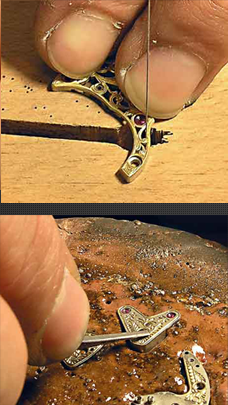 by hand, in the world. These masters make dials shine fascinating, just like the Moon. by hand, in the world. These masters make dials shine fascinating, just like the Moon.
A guilloched dial looks like rhythmic poem, consisting of straight strokes, curved lines and concentric circles. Thanks to such combination, the line of guilloched surface at different lights as if play and flow into each other, creating an incredibly beautiful show. As many photographers say, no on picture can transfer all beauty of such engraving – you can feel the light shimmer and guilloche play only in motion.
It is notable that guilloche was invented by legendary Abraham to conceal the scratches, appearing on the watch of even the most neat and careful person in time. However, during two last centuries guilloche became an exclusively decorative engraving, at that specific to certain watch companies. So, Cartier, Chronoswiss, Kelek, Jaeger-LeCoultre and Longines added guilloche to their armory. Almost all watch dials of Breguet are guilloched.
Guilloching is a long and slow process. The dial is lined a stroke after stroke, slowly and carefully, as the final result should look a whole pattern. The less the separate strokes stand out, the better. The most important thing in guilloche is the light shimmer and lines play.
This process requires too much craftsmanship, as the average density of guilloche makes up 3-5 lines per a millimeter! That’s where true craftsmanship and hand steadiness of guillocher are needed.
The base of guilloche is gold and silver, some alloys, sometimes mother-of-pearl. The thickness of metal must be equal to 0.3-0.4 mm (little bit more for silver), that’s why the metal must be enough strong to stand the finishing at such thickness.
Over the years some styles of guilloche became traditional. So, we can distinguish the following styles: “Cotes de Geneve”, “Cotes Circulares”, “Guilloche Soleil ou Grene” (this style if especially specific for Franc Muller watches). Also we can notice the wrist watches “Reverso” by Jaeger-LeCoultre, the dials of which combine “Grenadier-type Circular” and usual engraving. The dials of elegant Cartier are also distinguished by their special style of guilloche, perfectly combined with true French sophistication. And the German company “Glashutte” even given its brand strips a name. Those strips were also used in the watches of A.Lange & Sohne.
The watch companies, guilloching not only the case or dial of their watches, but also the movement details: rotor, plate, bridge or tourbillon elements – are at the top of guilloche use. One can simply say about such items: “Pluperfection”. The model “Opus Two Tourbillon”, issued in a limited number in 2002, is a striking example of such art. That brilliant masterpiece was created by the company “Harry Winston” and independent Genevan watchmaker Antoine Preziuso. The open bridges are adorned by guilloche in Rayonne style. The back case, made of sapphire glass, allows admiring the complicated movement, decorated already traditional “Genevan strips”.
A few words about history of guilloche:
The history of guilloche starts in the Middle Ages: then people used a simple turning machine to process ivory and wood, decorating them with patterns. At first the machine was improved in Western Europe: it was fixed to a drive cord or a suspension spring that released the master’s hands and gave him more opportunities to run the cutter, and made the machine more powerful. The improvement of turning machine led to popularity of metallic surfaces. Today we know few about using guilloche in Renaissance. However, according to some historic facts, Leonardo DaVinci himself was interested in turning.
In the beginning of 17th century, after the death of great artist, a “rose-engine” on the base of turning machine was created in the south of Germany. The first rose-engine was designed for making circle patterns with the help of engraving cutter, made of steel or other strong metal.
From the XVII to the XVIII centuries the turning became extremely popular: both ordinary people and aristocracy were fond of it. The turning machines and rose-engines came into houses of European aristocracy and even into palaces of kings. The Prussian kings Friedrich III and Friedrich IV, the English King George III, the Russian Tsar Peter the Great were fancy on turning. But the French kings surpassed everybody in their enthusiasm on turning: Louis XV and Louis XVI were decorating their personal demand items with turning by themselves. Now we can see these items in historical museums.
The turning became so popular that even women started taking interest in it. So, the Queen Victoria also acquired a turning machine that she worked at by herself. It’s quite natural that the most amazing and wonderful samples were made by turning machines just in that epoch.
In the end of XIX century Peter Carl Faberge contributed to the interest in turning engraving by making the famous Imperator Easter eggs, combining the art of enamel and most delicate turning engraving – an unheard-of union of arts hitherto. In 1945 the masters began using diamond dust, which gave more opportunities for the cutters work.
At the same time, when everybody was carried away with turning and guilloche, that technique started penetrating into watchmaking. The savvy and talented watchmakers asked themselves “why not?” and started using that technique for decoration of cases and dials. Of course, as we’ve mentioned before, that technique had a quite certain purpose for watches: to conceal scratches that were unavoidable in time.
Due to its beauty the engraving couldn’t have only functional purpose for a long time, that’s why soon guilloche became one of the famous methods of dial adornment.
Speaking about the territory, guilloche was popular at, we can’t but mention a small German town with a large contribution to the watch history – Pforzheim.
That town is famous for its traditions in watchmaking. At first the rose-engines appeared in Pforzheim in 1857: the rose-engines were released by Lienhard in 1819 in the Swiss town of La Chaux-de-Fond, and brought to Pforzheim by German jewelers.
Soon Pforzheim became the world center of guilloche: in 1930, 33 guilloche companies and 330 guilloche craftsmen worked there.
But in that time the automatic engraving machines, which replaced the manual guilloche machines, were invented.
In 1970s the quartz crisis started and changed practically the whole world watch market, and the art of guilloche seemed to go away forever: in 1982 only three masters of guilloche were in Pforzheim.
Guilloche today:
Guilloche is an excellent art, which was handed from one generation of masters to another. Today the watch world reserved the hand guilloche, which is highly valued.
Many watch companies can’t afford to spend the time and efforts necessary for guilloching by hand of one dial.
But today the hand guilloche is replaced by stamping: most part of dials at the watch market, adorned with intricate patterns, is made with the help of simple stamping.
An ordinary person will hardly notice with a naked eye the difference between a unique true pattern, made by the hand of master, and a pattern, copied by engraving machine.
Mother-of-pearl
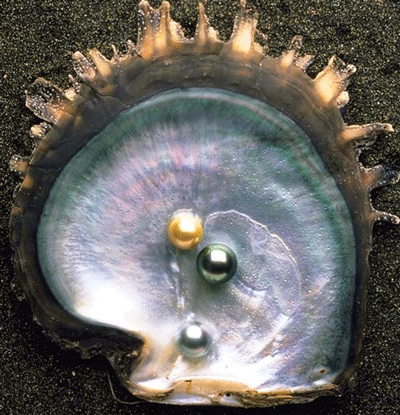 The mother-of-pearl dials are an often phenomenon in the modern watch industry. The adornment of dial with mother-of-pearls is not less hard and responsible process, than the technological component of chronometer. The mother-of-pearl is mostly used for adornment of women wrist watches. However, before we start speaking about mother-of-pearl dials, let’s remember where that amazing material, fascinating more than one generation of people, appeared from… The mother-of-pearl dials are an often phenomenon in the modern watch industry. The adornment of dial with mother-of-pearls is not less hard and responsible process, than the technological component of chronometer. The mother-of-pearl is mostly used for adornment of women wrist watches. However, before we start speaking about mother-of-pearl dials, let’s remember where that amazing material, fascinating more than one generation of people, appeared from…
The mother-of-pearl has been known by humanity since times immemorial. Its durability and purity, special play and tenderness of colors became attractive features of that material.
The history of mother-of-pearl is rooted in antiquity. The items of that material were found in the tombs of Ancient Egypt; in Ancient Rome is was considered to be a symbol of power and wisdom; in Middle Ages the vessels and cups from mother-of-pearl were considered to be a privilege of exclusively upper class.
In Middle Ages people believed that a drink from mother-of-pearl cup prolonged life and healed serious deceases.
The unique material was valued for its noble beauty and considered to be good for the nervous system and protection from evil eye.
The mother-of-pearl powder was available in any medieval drugstore up to the XVIII century.
Nowadays the mother-of-pearl powder is known as a medicine, building up immunity; it is used even in cosmetics: many people think that this component in some cosmetics removes freckles and dark spots, keeps skin young and fresh.
The mother-of-pearl is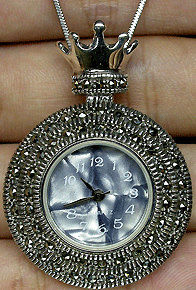 obtained from shells of sea cephalopods. It received such name not by chance, as any foreign body, getting into a shell, either a grain, or other body, is overgrown with mother-of-pearl. The mother-of-pearl consists of lime carbonate, exuding from a shellfish. This substance, fascinating people so many years, doesn’t contain a dying component, but at the same time it plays with all colors of the rainbow. This unique and amazing feature of mother-of-pearl depends on its complicated structure – organic lime substance, consisting of microscopic plates which are reflected from each other and refract the light rays. The mother-of-pearl shines with most various tones from white and rosy to practically black, thanks to the optic effect. obtained from shells of sea cephalopods. It received such name not by chance, as any foreign body, getting into a shell, either a grain, or other body, is overgrown with mother-of-pearl. The mother-of-pearl consists of lime carbonate, exuding from a shellfish. This substance, fascinating people so many years, doesn’t contain a dying component, but at the same time it plays with all colors of the rainbow. This unique and amazing feature of mother-of-pearl depends on its complicated structure – organic lime substance, consisting of microscopic plates which are reflected from each other and refract the light rays. The mother-of-pearl shines with most various tones from white and rosy to practically black, thanks to the optic effect.
The mother-of-pearl plates are widely used today in decoration of expensive interior items, various dishes and vases, photo frames, table mirrors and boxes, etc.
The watch industry didn’t stand off from total “fancy” in mother-of-pearl either. The material goes through a complicated processing before decorating your chronometer.
The mother-of-pearl is mostly extracted in warm tropical seas of Persian Gulf, Red Sea, on islands Borneo and Sri-Lanka, at the costs of Philippines and Japan. The mother-of-pearl became a part of culture in those countries, and in time people started composing legends and beliefs around that amazing creation of nature that only inflamed the interest in it and its price.
The processing of mother-of-pearl is a complicated process, as the shells it is obtained from are fragile and require a skillful treatment. However, it is compensated by simplicity of following treatment: it’s enough to wash the mother-of-pearl in soap solution sometimes. It concerns to different mother-of-pearl adornments, but the mother-of-pearl dial, protected by glass, becomes practically “invulnerable” to dust and dirt.
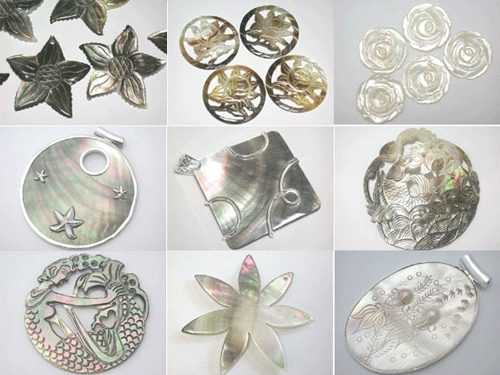 The processing of mother-of-pearl requires several masters to work at the same time: cutter, grinder, polisher, molder and engraver. At first the shells are cut up and the upper layers of mother-of-pearl are cut off, then the pure pieces of material are cut up and turned. Then the mother-of-pearl is molded and polished. The modern technologies are able to obtain almost any tome of this material: from light pastel shades to unusual dark tones. So, for example, to create an unusual dark tone the white mother-of-pearl is dyed in solution of silver chloride. The processing of mother-of-pearl requires several masters to work at the same time: cutter, grinder, polisher, molder and engraver. At first the shells are cut up and the upper layers of mother-of-pearl are cut off, then the pure pieces of material are cut up and turned. Then the mother-of-pearl is molded and polished. The modern technologies are able to obtain almost any tome of this material: from light pastel shades to unusual dark tones. So, for example, to create an unusual dark tone the white mother-of-pearl is dyed in solution of silver chloride.
The mother-of-pearl seems to be always in modern trend. Many watch companies took that material in their armor. Today the plates of many dials are made of mother-of-pearl indeed that changes a usual chronometer into a festive accessory of incredible beauty. The mother-of-pearl is mostly used for women wrist watches, since its beauty is exclusively feminine: the playing light shades undoubtedly adorn and emphasize the delicate women wrists.
One of the companies, distinguished at the modern watch market with use of mother-of-pearl, is Bovet, which deserved recognition even with Chinese and British Emperors by its incredible craftsmanship in enamel art and complicated technique of mother-of-pearl coating. The masters of that company managed to magically keep ancient secrets of work with mother-of-pearl during many years and bring them to its modern clients.
So, the concept “mother-of-pearl dial” is a complicated technological process of polishing of natural mother-of-pearl. It requires much carefulness and experience, as the mother-of-pearl is a very fragile material. The thickness of polished material makes up a micron thickness, and through the vacuum the specialists apply the micron mother-of-pearl on the dial plate: the mother-of-pearl dial is ready.
However, if they have to make a mother-of-pearl picture on the dial, everything gets more complicated. Making of one miniature picture may take an artist about 240 hours and more, depending on complexity of picture. The work is completely done under the microscope. One foozle and the miniature, on which so much time and efforts were spent, can be irretrievably spoiled. That’s the reason the wrist watches with mother-of-pearl miniature are mostly made by order…
To be continued ...
|


